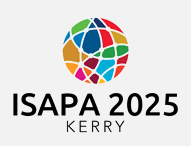Start Date
16-6-2025 3:30 PM
End Date
16-6-2025 5:00 PM
Abstract
Introduction The re-inclusion of athletes with intellectual impairments (II) in the Paralympic Games in 2012 was a landmark moment for equitable representation in sports1. The representation of II-athletes at a major sport competition such as the Paralympic Games is an important vehicle to promote inclusion. This study examines the trends in participation, representation, and performance of II-athletes from London 2012 to Paris 2024.
Methodology Publicly available data from Paralympic Games results books (2012–2024)2 and qualification regulations were analyzed to track participation rates, entries, event growth, and the contributions of II-athletes to national success. Key metrics included athlete representation, success rate per nation, medal return, and performance comparisons across events and gender.
Results From 2012 to 2024, the number of sports for II-athletes was static (i.e., swimming, table tennis and athletics) and the number of events within those sports increased marginally, with participation growing significantly between London and Tokyo but regressing in Paris. Gender equity among II-athletes improved, with women achieving greater representation in Paris. However, female II-athletes underperform relative to their counterparts when compared with Olympic performance. While II-athletes contribute positively to national success metrics, event limitations and stagnating participation hinder their full inclusion.
Conclusions The gradual inclusion of II-athletes in the Paralympics is commonly seen as a transformative step promoting representation and equity. However, limited event growth and performance disparities—particularly for female II-athletes—highlight the need for expanded opportunities and investment. These findings resonate with the ISAPA 2025 theme, emphasizing the importance of targeted strategies to advance equity in APA.
References 1Van Biesen, D., Burns, J., Mactavish, J., Van de Vliet, P., & Vanlandewijck, Y. (2021). Conceptual model of sport-specific classification for para-athletes with intellectual impairment. Journal of Sports Sciences, 39(sup1), 19-29.
2International Paralympic Committee. (2012, 2016, 2020, 2024). Paralympic Games Results Books. Retrieved from https://www.paralympic.org/paralympic-games.
Recommended Citation
Van Biesen, Debbie; pineda, roi charles; and Burns, Jan, "The Paralympic Pathway: Evolution of Participation for Athletes with Intellectual Impairments in the Paralympic Games since 2012" (2025). International Symposium of Adapted Physical Activity and International Symposium on Physical Activity and Visual Impairment and Deafblindness. 18.
https://sword.cit.ie/isapa/2025/day1/18
The Paralympic Pathway: Evolution of Participation for Athletes with Intellectual Impairments in the Paralympic Games since 2012
Introduction The re-inclusion of athletes with intellectual impairments (II) in the Paralympic Games in 2012 was a landmark moment for equitable representation in sports1. The representation of II-athletes at a major sport competition such as the Paralympic Games is an important vehicle to promote inclusion. This study examines the trends in participation, representation, and performance of II-athletes from London 2012 to Paris 2024.
Methodology Publicly available data from Paralympic Games results books (2012–2024)2 and qualification regulations were analyzed to track participation rates, entries, event growth, and the contributions of II-athletes to national success. Key metrics included athlete representation, success rate per nation, medal return, and performance comparisons across events and gender.
Results From 2012 to 2024, the number of sports for II-athletes was static (i.e., swimming, table tennis and athletics) and the number of events within those sports increased marginally, with participation growing significantly between London and Tokyo but regressing in Paris. Gender equity among II-athletes improved, with women achieving greater representation in Paris. However, female II-athletes underperform relative to their counterparts when compared with Olympic performance. While II-athletes contribute positively to national success metrics, event limitations and stagnating participation hinder their full inclusion.
Conclusions The gradual inclusion of II-athletes in the Paralympics is commonly seen as a transformative step promoting representation and equity. However, limited event growth and performance disparities—particularly for female II-athletes—highlight the need for expanded opportunities and investment. These findings resonate with the ISAPA 2025 theme, emphasizing the importance of targeted strategies to advance equity in APA.
References 1Van Biesen, D., Burns, J., Mactavish, J., Van de Vliet, P., & Vanlandewijck, Y. (2021). Conceptual model of sport-specific classification for para-athletes with intellectual impairment. Journal of Sports Sciences, 39(sup1), 19-29.
2International Paralympic Committee. (2012, 2016, 2020, 2024). Paralympic Games Results Books. Retrieved from https://www.paralympic.org/paralympic-games.


